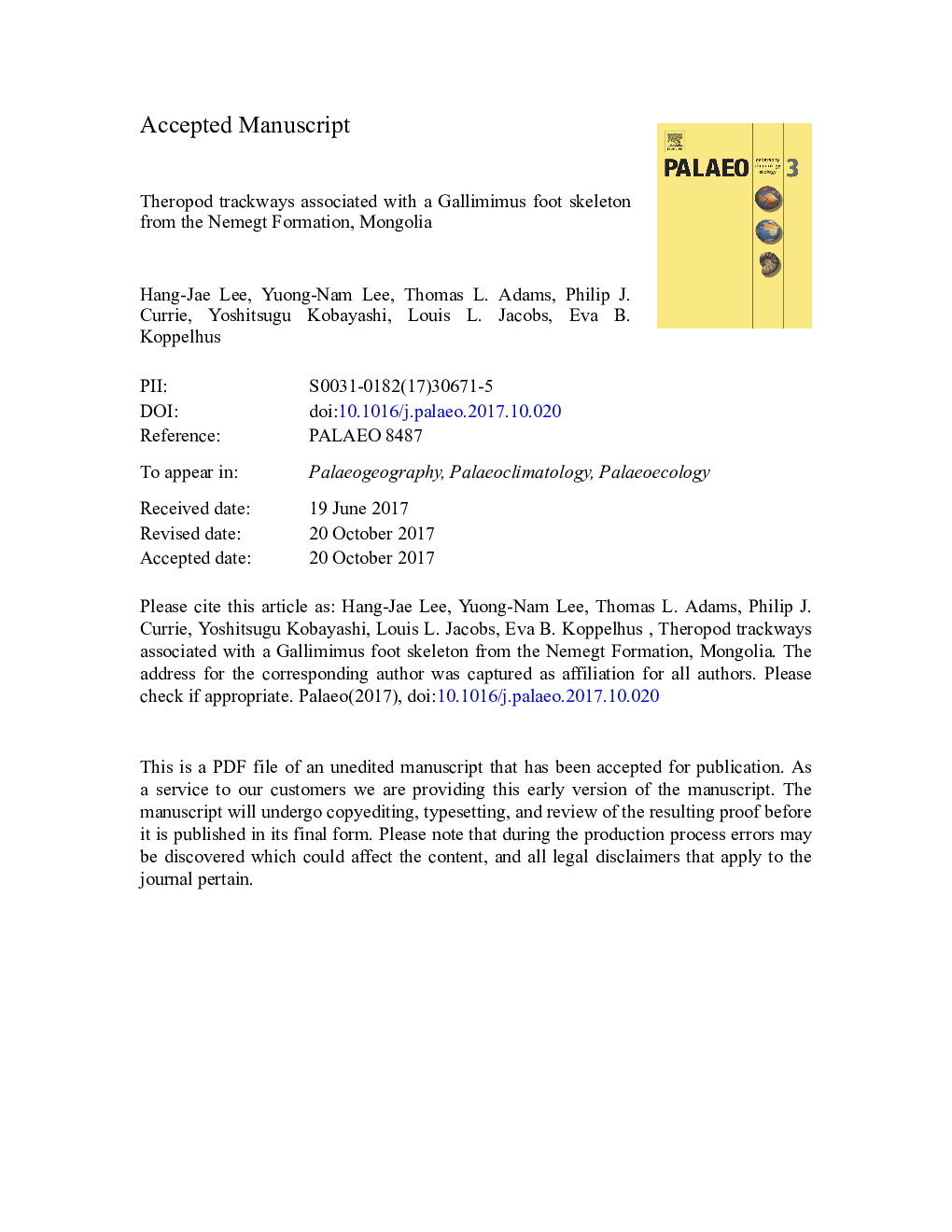| کد مقاله | کد نشریه | سال انتشار | مقاله انگلیسی | نسخه تمام متن |
|---|---|---|---|---|
| 8868367 | 1622098 | 2018 | 27 صفحه PDF | دانلود رایگان |
عنوان انگلیسی مقاله ISI
Theropod trackways associated with a Gallimimus foot skeleton from the Nemegt Formation, Mongolia
دانلود مقاله + سفارش ترجمه
دانلود مقاله ISI انگلیسی
رایگان برای ایرانیان
موضوعات مرتبط
مهندسی و علوم پایه
علوم زمین و سیارات
فرآیندهای سطح زمین
پیش نمایش صفحه اول مقاله

چکیده انگلیسی
A theropod tracksite was discovered in the Nemegt Formation (Maastrichtian) at Bügiin Tsav, Mongolia by the Korea-Mongolia International Dinosaur Project in 2009. A total of 67 tracks (14 trackways [one didactylous, 13 tridactylous] and 12 isolated tracks) belonging to four ichnomorphotypes were mapped on a single horizon. This indicates at least four different theropod trackmakers lived in the same area at the same time. This tracksite consists of laminated gray mudstone-yellowish brown siltstone couplets interbedded with eolian yellowish brown sandstone deposited on a distal floodplain. Abundant footprints with V-shaped profiles (cross-section) within in the vertical section indicate that dinosaurs repeatedly walked across in this area. Before the discovery of the tracks, the site was illegally excavated by fossil poachers, a widespread problem in the Gobi Desert. During excavation of the track horizon, a clenched, inclined Gallimimus foot skeleton was found in the mudstone, extended down 20Â cm below the track-bearing sandstone layer. The occurrence of tracks closely associated with body fossils is unusual and taphonomically intriguing. It is possible that the foot skeleton represents an animal that died in its tracks. However, the depth of the foot in mud is probably too shallow for the animal to have been mired. Sedimentological and taphonomic evidence also suggests that the pes of Gallimimus may have passed straight through the track-bearing sandstone layer. The inclined right pes indicates that the body lay on its left side on the substrate. During decomposition in the mud, all digits were flexed but the distal phalanges were stuck and anchored in the stiff lower mud. Consequently, as more proximal phalanges were able to accommodate flexing, they were pulled away and dislocated from the anchored distal phalanges. Subsequent trampling by dinosaurs in the track-bearing sandstone would have further distorted the underlying foot.
ناشر
Database: Elsevier - ScienceDirect (ساینس دایرکت)
Journal: Palaeogeography, Palaeoclimatology, Palaeoecology - Volume 494, 1 April 2018, Pages 160-167
Journal: Palaeogeography, Palaeoclimatology, Palaeoecology - Volume 494, 1 April 2018, Pages 160-167
نویسندگان
Hang-Jae Lee, Yuong-Nam Lee, Thomas L. Adams, Philip J. Currie, Yoshitsugu Kobayashi, Louis L. Jacobs, Eva B. Koppelhus,